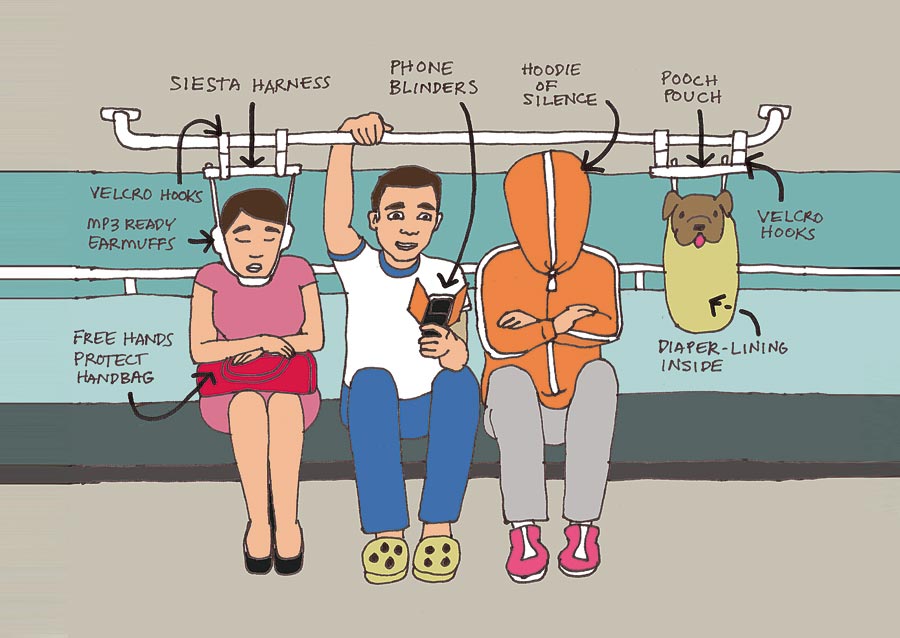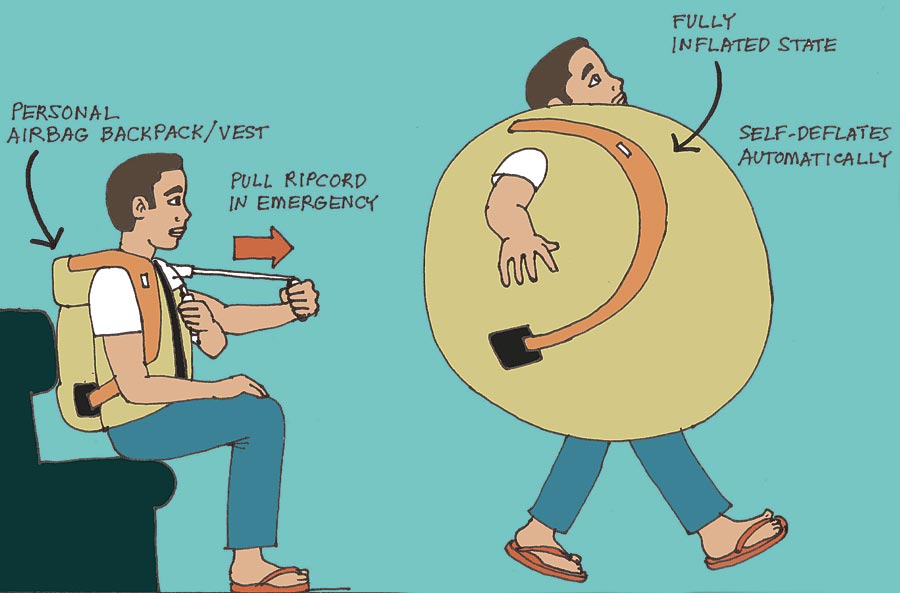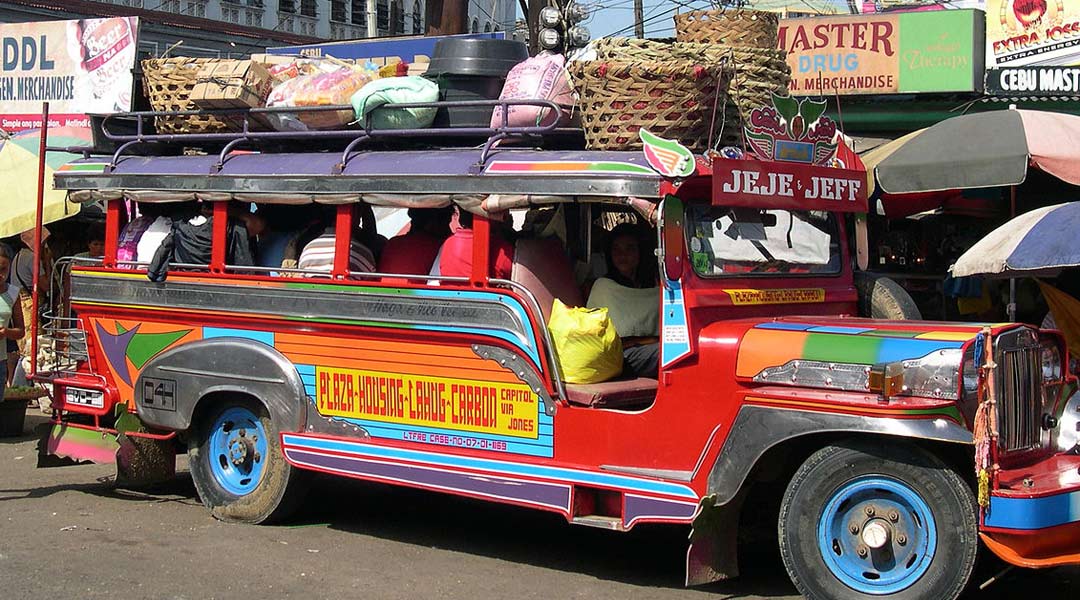Everything that needs to be said about how the Philippine Jeepney is a shining example of Filipino ingenuity, adaptability, resilience, creativity, craftsmanship, cheerfulness and cultural character has been said over and over again when the need arises for a positive spin on the crazy, cacophonous and chaotic transportation system of the country we live in.
The King of the Road is universally recognized as the bane of all motorists, cyclists, traffic enforcers, runners and asthmatic or nonasthmatic air-breathing people in general.
The design standards they follow seem to have come from a galaxy far, far away, where drivers have fluidly jointed limbs that allow them to drive with their legs askew while constantly reaching backwards for passenger fare; where safety of life, limb and property is scoffed at and traffic regulations only apply when in extreme danger of getting caught for a violation; where “Naghahanapbuhay lang!” is the password that gives them the right to stop anywhere on a whim.
Yet they persevere and even seem to be growing in number.
One need not look up statistics to see that the Jeepney really does fill the general public’s need for cheap and convenient transportation. How many of us have hopped on a stainless steel cavity to cover the last few kilometers to our destinations Until climate change somehow dissipates our humidity and lowers the temperature to a crisp 18 degrees Celsius so that walking becomes pleasant, Jeepneys (and tricycles) are here to stay.
For sure, a viable alternative exists out there, but until political will (whatever that is) forces the Jeepney off the streets and into its well-deserved place in history books or stories we tell our kids (“We used to take the Jeepney to school every day so stop complaining about the family driver’s harsh cologne”), this wartime relic turned folk art gallery on wheels shall remain a fixture in our daily commuting lives.
READ MORE: ‘Green Green Green’ budget for more public space in PH cities
The rise of the machines is upon us and we humans need to adapt. We need Chindogu! For those who don’t know, Chindogu is the Japanese art of coming up with bizarre gadgets for simple, everyday tasks. Leave it to them to come up with the most bizarre inventions. Japan is a nation of public commuters, so a lot of Chindogu are made for train or bus passengers. Some kooky examples are an extra fake arm to help not-so-tall people reach the ceiling hand rail and a headband with an adjustable arm that suctions on to the glass window and holds your head in place so you can nap without the fear of falling flat on your face.
Here are some Chindogu I propose for our dauntless Jeepney-riding public:
Siesta Harness – This is a chin-strap with an adjustable belt that hooks on the handrail so you can snooze with both hands free to protect your bag from pickpockets. This also gives good traction therapy for those with Carpal-tunnel syndrome.
Sabit Strap – This resembles a helicopter rescue harness complete with multiple carabiners and is for those daredevils (are they part of Treadstone?) who like to hang on to the outside of the vehicle.
Hoodie of Silence – This is essentially a hooded sweatshirt with an extended hood that covers your entire head and face. It is woven with acoustic fiber that blocks out all AC/DC, Air Supply, Eagles, Deep Purple, America and any other audio that may cause eardrum rupture or extreme LSS.
Evil–Eye Glasses – These are glasses with fake eyes on the lenses so you always win the inevitable stare-down with the passenger opposite you, while your real eyes check out the hottie at 2 o’clock. They come in all the latest frame styles.

Para App – Download this app if you are speech impaired or just very shy. Your phone will scream pre-programmed calls like “Para sa kanto!” or “Bayad po!” for you.
Criminal Disabler – If you happen to be unfortunate victims of a Jeepney hold-up, hand over this fake cellular smartphone that looks like the real thing. When close enough, activate the 600-volt taser and render the miscreant helpless so you and fellow passengers can turn him over to the nearest baton-wielding tanod.
Pooch Pouch – Put your pet in this foldable sack with its head sticking out and use the attached hooks to hang it on the handrails. This will help your animal friend deal with transport stress and contain any smelly “accidents.” It is completely washable and comes in various sizes depending on breed. Not advisable for human infants.
READ MORE: Mini Metros, simplified city rail systems (Manila included)

Phone Blinders – Text with confidence, knowing that the nosy person beside you cannot read the cheesy texts you’re sending or check out your Facebook news feed alerts or scandalworthy pics. This device attaches to your phone and when folded works like a mini election privacy folder or horse blinders.
Personal Airbag – In the inopportune event of a strong collision, absolutely nothing will keep you from flying off your seat and getting hurt unless you have a death-grip on the handrail and have been diligent with your core workouts. This personal airbag built into a backpack inflates fully around your torso a fraction of a second after pulling a ripcord, protecting you, and maybe a few other co-passengers from possible serious injury.
For us motorists who have to share the road with these often burdensome beasts of burden, no Chindogu will do to help us deal with the stress of driving behind a nasty, noisy mess of stainless steel, tacky decoration, stickers, leatherette, diesel fumes and people. We just need to take heart in the fact that the people on that thing need to get to where they’re going just as much as we do, and they have the same right as us to choose the way they get there.
Until there is a better choice, this is the choice they have made and the choice we all have to live with. We’re all in this traffic together. ![]()
This article first appeared in BluPrint Special Issue 3 2012. Edits were made for BluPrint online.



